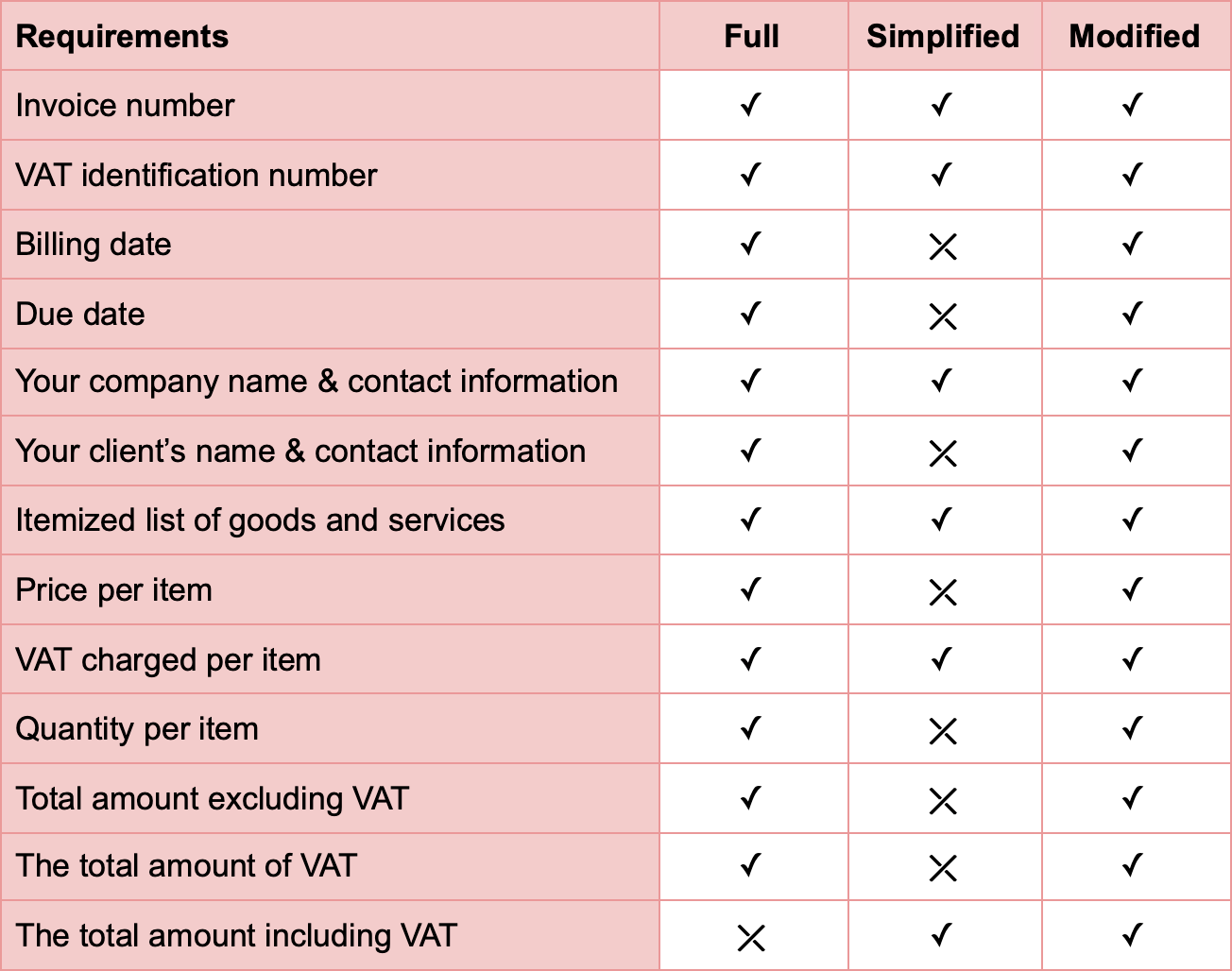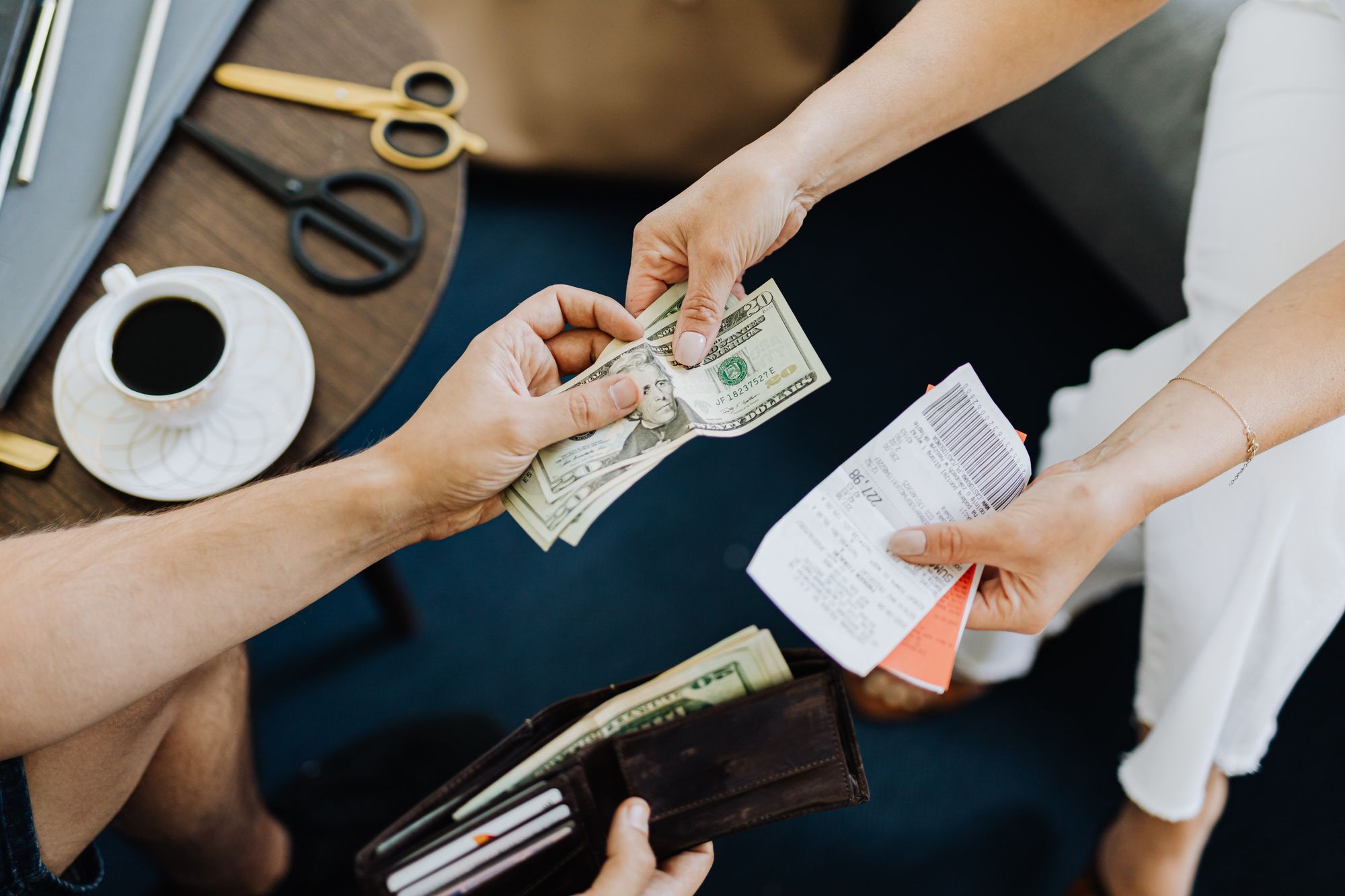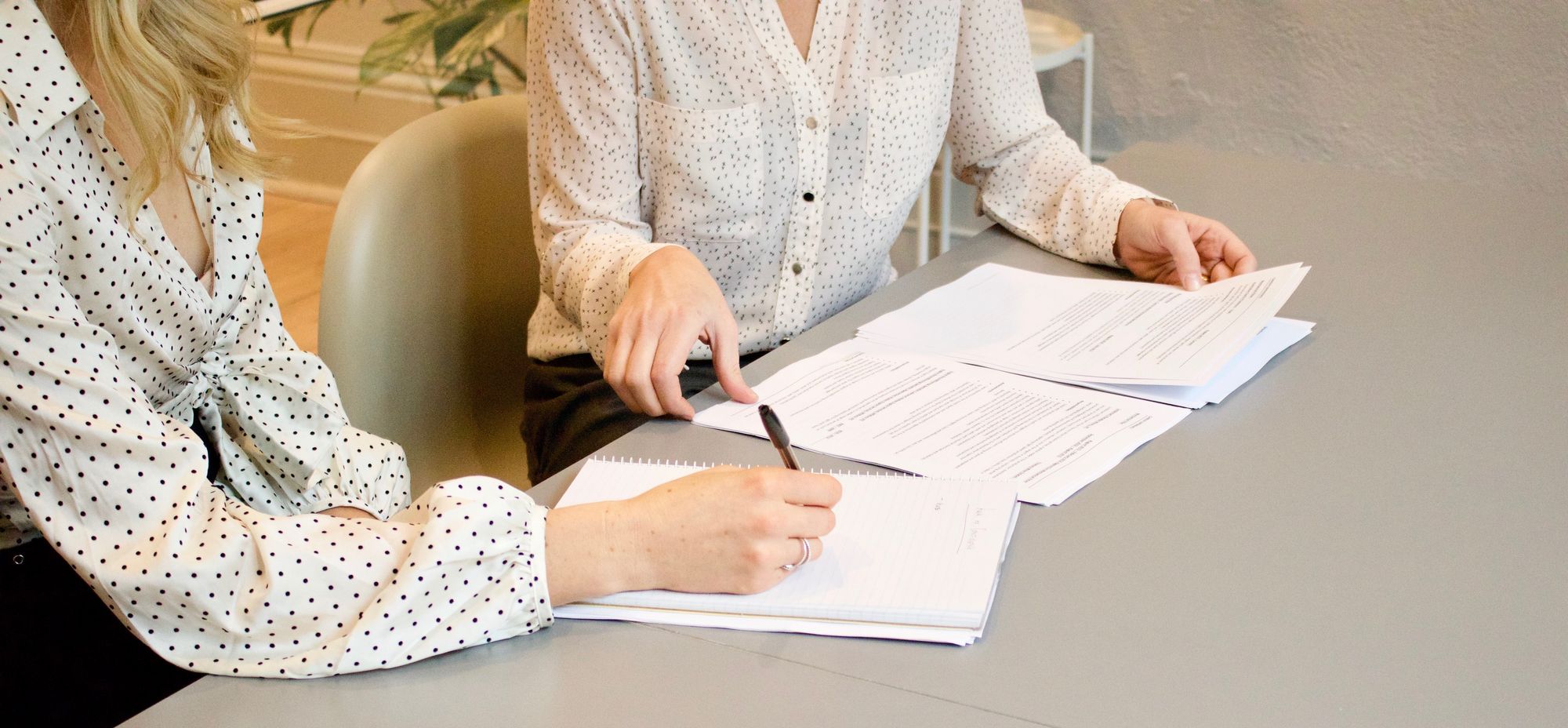While businesses located in the US are imposed a retail sales tax, many other countries across the world are subject to a consumption tax called VAT.
VAT stands for Value Added Tax, and it’s a tax imposed on almost all goods and services bought and sold for consumption. A VAT invoice is the invoice businesses issue when a sale is subject to this VAT tax.
In this guide, we will be explaining the rules of VAT, when to charge VAT in an invoice, and everything else you need to know about issuing a VAT invoice for your small business accounting.
Read along to learn about:
- What Is VAT?
- What Is a VAT Invoice?
- When Do I Need to Issue a VAT Invoice?
- VAT Invoice Requirements
- Types of VAT Invoices
- Automate VAT Invoices with Online Accounting Software
- VAT Invoice FAQ
What Is VAT?
Value Added Tax (VAT) is one of the most common types of consumption taxes worldwide.
A consumption tax is a tax paid by the people buying the products and the services. The VAT businesses charging those taxes are only acting as tax collectors for the government.
So, simply put, VAT is a tax ultimately paid by the consumer or the end-user, to the government.
Currently, over 160 countries around the world use VAT, but the tax is most widely spread within the European Union.
The U.S, for example, does not charge a federal VAT tax but instead, it charges a different sales tax at a local level.
That’s why exported goods sold outside of the EU are normally not subject to VAT. There are a few exceptions, however, that you can check out on this list of VAT-compliant countries.
VAT is chargeable for most types of sales and purchases, at different rates, depending on the country. These rates vary because each country is liable for setting its own VAT charges.
What Is a VAT Invoice?
A VAT invoice is a commercial document that lays out all of the details of goods and services sold that are subject to a value-added tax.
Just like every other regular sales invoice, a VAT invoice is issued to inform clients about the amount of money they owe for products provided, and to establish an obligation for that payment.
Under the EU laws, businesses need to issue their VAT invoice to the buyer within 15 days after the end of the month in which the goods and services were delivered. To avoid the chance of dealing with past due invoices, we’d recommend sending over the invoice no more than 48 hours from when the delivery is finished.
Keep in mind that businesses not registered for VAT shouldn’t charge the tax. They only need to send a standard invoice, with no VAT details included.
If you want to learn more about when to issue an invoice and how to handle late payments, check out our guide on how to send an invoice.
When Do I Need to Issue a VAT Invoice?
In order to issue a VAT invoice, you need to be an accountable person.
An accountable person is any taxable individual, business, or organization that supplies goods and services and is registered for VAT. VAT registration is the process of recording your business with the government, as active in sales and production.
Now you’re probably wondering: when should I register for VAT with the government?
If you’re selling VAT-exempt goods and services, such as sporting activities, or medical treatments, you do not have to register for VAT or issue VAT invoices at all.
For businesses that sell even one type of product subject to a VAT rate, on the other hand, there are a few legal obligations for when VAT registration is done, that vary from country to country.
Usually, though, businesses are obligated to apply when their VAT taxable turnover (the total of everything you sell that isn’t free from tax) exceeds £85,000 in a 12-month period.
In other words, businesses that make more than 85k a year, are legally obliged to register for VAT, pay the tax, as well as issue VAT invoices. These thresholds may vary from country to country.
The application and registration must be done within 30-days of realizing that the tax turnover will go over £85,000.
If you make a late VAT registration, the revenue and customs department can hold you accountable for a penalty of around 5% - 15% of the VAT due.
In addition to the fee, you’ll also be required to include VAT on all of the sales made, from the date that the business should have registered. If you haven’t registered when you should have, the quicker you act, the fewer penalties you will incur.
That’s not to say, though, that you can’t voluntarily register for VAT before the business has reached the £85,000 worth of taxable turnover. You are free to register for VAT whenever you feel as if it most benefits the business.
If you’re dealing with the general public, for instance, it’s best to avoid registering as a VAT business from the get-go. With VAT you’ll be charging your buyers more, making the business appear more expensive, and driving some customers away.
On the other hand, if you’re mainly dealing with bigger firms and corporations that don’t really mind the extra VAT on their invoices, registering for VAT right away can be a favorable decision.
Ultimately it all depends on your business specifics, and it’s a step best taken after advising with a qualified accountant.
VAT Invoice Requirements
A VAT invoice needs to contain several essential elements, in order to be considered a complete and legally binding document.
These elements include:
- An invoice number
- The business VAT identification number
- Business name and contact information
- The billing date
- The due date
- Client name and contact information
- An itemized list of the goods and services provided
- Price per item
- Quantity per item
- The amount of VAT per item
- The quantity of each item
- The total amount due without including VAT
- The total amount of VAT due
- Any discounts or other reductions
- Payment terms
Types of VAT Invoices
Depending on the amount charged per sale, we divide VAT invoices into three main types: full, modified, and simplified VAT invoices.
Full VAT Invoice
A full VAT invoice is the standard form of invoice used when goods and services are subject to VAT. It includes all of the necessary requirements of a VAT invoice, previously mentioned.
When in doubt, use this format, as it is the most common form of a VAT invoice and can be used for any amount.
Simplified VAT Invoice
When the total amount due by the customer is less than £250, then the business needs to fill out a simplified VAT invoice.
Because a simplified invoice is used for small, inexpensive sales, it contains fewer details than a regular invoice or modified invoice.
There is no requirement to include buyer contact information or the date of the invoice. A simplified VAT invoice only needs to provide information on the supplier, the goods and services provided, and their VAT rate and pricing.
Modified VAT Invoice
A modified VAT invoice is only used for a purchase that exceeds £250. The modified VAT invoice has the same elements as the full invoice, plus the ending balance amount including VAT.
Here’s a cheatsheet with the main differences between these three types of VAT invoices:

If you want to know more about what different types of invoices you may need to issue as a small business owner, head over to our guide on invoice types.
Automate VAT Invoices with Online Accounting Software
From January 1st, 2015, the EU has made it mandatory for VAT taxes to be recorded digitally through an online system.
And what better way to keep track of your taxes than with software like Deskera, which can streamline your entire taxation and invoicing process in a few clicks.
Deskera is a cloud accounting software with in-built tax setup features allowing you to calculate your VAT and issue VAT invoices within seconds.
Let’s check in detail how simple and straightforward it is to apply your value-added tax in the software.
Deskera has default tax rates set up in the system, that get updated regularly according to your country’s tax rates.
Also, you can even add customized VAT tax rates applicable to your business just as easily, by filling out the tax rate form shown below.
Once that short setup is done, issuing invoices is as easy as 1-2-3!
On the Sales module, just select the type of tax you want to charge from the dropdown menu, and add in the tax amount you’re charging.
Then, fill out the invoice with the rest of the appropriate invoice details, and you’re done!
You don’t have to worry about making journal entries, either!
Once you’ve created the invoice and sent it to the customer, the software will automatically post the appropriate debit and credit entries into the ledger. Without you having to lift a finger!
Have customers you sell tax-exempt goods and services to?
Deskera lets you mark any contact as non-taxable, by simply checking a “Tax Exemption” box.
The best part? The software is accessible anytime, anywhere if you simply download the Deskera mobile app on your phone or tablet.
Sign up for our completely free trial, now!
VAT Invoice FAQ
#1. What’s the Difference Between a Sales Tax and VAT?
A sales tax is used for businesses located in the US, whereas VAT is used for companies within the EU.
The other main difference is related to the distribution of the tax.
The VAT tax is charged at every stage of the production process, as well as the sale of the finalized product to the buyer. A sales tax, on the other hand, is only part of the final invoice issued to the consumer.
#2. Can I Send An Invoice Without a VAT Number?
VAT numbers are only given to companies registered for VAT, so if your business is not, it’s totally fine to issue invoices without a VAT number.
However, it’s still important that your invoices contain all of the other basic information about the goods and services provided, pricing, and customer.
If you want to learn more about the elements of an invoice and how to create one from scratch, head over to our guide on how to make an invoice & get paid faster.
#3. Can You Amend a VAT Invoice?
Yes, if the VAT amount charged or the VAT rate is found to be incorrect, you can make changes to your invoice.
To decrease the price of an incorrect invoice, or correct an inaccurate VAT rate you have to issue a credit note to the client in respect of the price reduction, along with a new, revised invoice.
If you want to know more on how to correct unintentional accounting mistakes, read our guide on common accounting errors.
Key Takeaways
And that’s a wrap! We hope our VAT invoice guide was helpful in understanding how VAT works, and when you should charge the tax to clients.
Before leaving, let’s go over some of the main points we’ve covered:
- VAT stands for value-added tax, and it’s a consumer tax, paid by the end-user buying a good or service. Currently, over 160 countries charge VAT, mostly in the EU.
- The rules for VAT registration are complex and differ from country to country. Generally speaking, though, if a business exceeds 85k worth of tax turnover, it usually means it’s legally required to register for VAT.
- A VAT invoice is an invoice that a business issues to a client for goods and services subject to VAT.
- A properly documented VAT invoice includes all of the elements of a regular invoice, along with the VAT identification number and VAT amount charged per product.
- With accounting software like Deskera, you can automate your entire VAT calculation, and send out VAT invoices within seconds!
Related Articles








![Difference Between an Invoice vs a Receipt [with Examples]](/blog/content/images/2021/01/invoice-vs-receipt.jpg)
